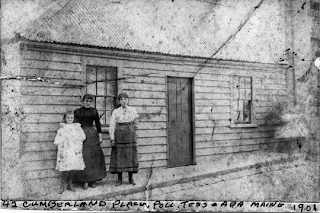 |
| 7 Year Old Inspired by Durer |
Thanksgiving weekend is often one big overload; too much driving, too much food. This year I decided to break up our annual upstate NY Food n’ Family fest with a day trip. As a child my parents often took me to Williamstown Massachusetts and I wanted to take my kids to see it. The drive, I remembered, was always beautiful, hilly, full of steep inclines. There were terrifying moments with Dad, in the driver’s seat, making hairpin turns at 75mph while pointing out the window to show me the sights.
We'd usually go to the Sterling Clark Institute. I told my sons about this huge museum packed with French Impressionists. Mostly Renoirs. I didn’t like Renoir as a child and I’m still not a huge fan. But I was always enthralled by the huge painting of Nymphs and Satyr by Bougereau and a naive wood carving by Gauguin that hung over a doorway.
Neither of these pieces was there anymore. Even the Renoirs were on tour. And the museum itself, while impressive for a small collection, was pretty…well…small. But what they do they do well. And they currently are running a fantastic Albrecht Durer exhibit. http://www.clarkart.edu/exhibitions/durer/content/exhibition.cfm His skill was amazing, his imagination mindboggling, his fantastical woodcuts and engravings were ground breaking at the time. But for a seven year old I wondered how a day in the museum would compare with a day full of TV and Wii games.
I’ll tell you how it compared. My boy fell in love with the artwork. There was a Durer Drawing Day underway when we arrived. He and I were handed pads of papers, portable drawing boards, some supplies, and the opportunity to sit for a lesson with a “real artists.” We concluded that WE were “real artists” and skipped the lessons. We headed in to see the drawings. My son came face to face with some amazing pieces, some fantastic symbolism. Three-headed spewing dragons. Angels battling demons. Odd looking roaming animals. What more could a kid want?
He didn’t want to copy Durer's artwork. He wanted to be inspired. People sat all over the floor, drawing in corners, on benches, against the walls. I saw many children that were clearly gifted and spent hours on one piece. My boy’s drawings were quick and constant. He plowed through the drawing pad. He refused to leave. I dragged him to see other artwork but he was too moved by the Durers. He came back and drew his own demons. Angels. Gravestones. Skeletons floating into the sky. We went back to my mother’s house later and he dragged out the paints. He painted more.
I bought him a book of Durer’s woodcuts. “My first art book” he said proudly. It was a good Thanksgiving weekend. My boy is inspired and I’m truly thankful.

























